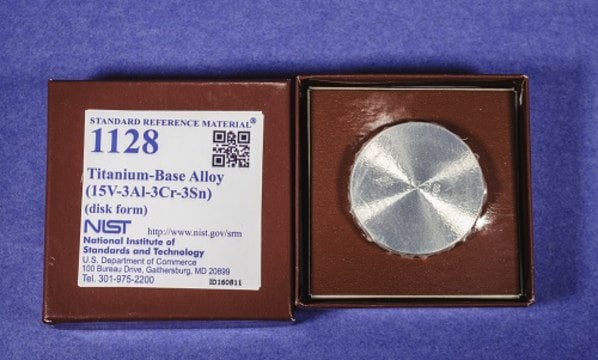SMB00609
6,6′-Dihydroxythiobinupharidine
≥95% (HPLC)
Synonym(s):
6,6′-Dihydroxythionuphlutine A, Nuphleine
Sign Into View Organizational & Contract Pricing
All Photos(1)
About This Item
Empirical Formula (Hill Notation):
C30H42N2O4S
CAS Number:
Molecular Weight:
526.73
UNSPSC Code:
51102829
NACRES:
NA.76
Recommended Products
Quality Level
assay
≥95% (HPLC)
form
powder
antibiotic activity spectrum
Gram-positive bacteria
mode of action
enzyme | inhibits
storage temp.
−20°C
SMILES string
O[C@H]1N2[C@@]([C@H](C)CC[C@H]2C3=COC=C3)([H])CC[C@@]14SC[C@]5(C4)CC[C@]([C@H](C)CC[C@H]6C7=COC=C7)([H])N6[C@@H]5O
General description
6,6′-Dihydroxythiobinupharidine is an active compound found in Nuphar lutea extract. It is a dimeric sesquiterpene thioalkaloid which presents multiple activities.
Biochem/physiol Actions
6,6′-Dihydroxythiobinupharidine inhibits NFκB activation, leading to an induction of apoptosis via cleavage of procaspase-9 and poly (ADP-ribose) polymerase (PARP).
It was also found to act synergistically with cytotoxic drugs such as cisplatin and etoposide, enabling their cytotoxic effect at lower concentrations.
6,6′-Dihydroxythiobinupharidine was found to have cytotoxic activity at a concentration of ~10 μM on human leukemia cells (U937), mouse melanoma cells (B16F10), and human fibroblasts (HT1080).
In addition, Nuphar lutea extract was effective against both Leishmania promastigote and amastigote forms (IC50 = 2 ± 0.12 μg/mL; ID50 = 0.65 ± 0.023 μg/mL; LD50 = 2.1 ± 0.096 μg/mL, STI = 3.23). A synergistic antileishmanial activity was demonstrated with the antileishmanial drug, paromomycin.
Recently 6,6′-dihydroxythiobinupharidine was found to be active against MRSA and VRE strains with an MIC of 1-4 μg/mL. Inhibition of DNA topoisomerase IV but not DNA gyrase in S. aureus was suggested as the mechanism of action. 6,6′-Dihydroxythiobinupharidine was also shown to promote neutrophil effector bactericidal functions.
It was also found to act synergistically with cytotoxic drugs such as cisplatin and etoposide, enabling their cytotoxic effect at lower concentrations.
6,6′-Dihydroxythiobinupharidine was found to have cytotoxic activity at a concentration of ~10 μM on human leukemia cells (U937), mouse melanoma cells (B16F10), and human fibroblasts (HT1080).
In addition, Nuphar lutea extract was effective against both Leishmania promastigote and amastigote forms (IC50 = 2 ± 0.12 μg/mL; ID50 = 0.65 ± 0.023 μg/mL; LD50 = 2.1 ± 0.096 μg/mL, STI = 3.23). A synergistic antileishmanial activity was demonstrated with the antileishmanial drug, paromomycin.
Recently 6,6′-dihydroxythiobinupharidine was found to be active against MRSA and VRE strains with an MIC of 1-4 μg/mL. Inhibition of DNA topoisomerase IV but not DNA gyrase in S. aureus was suggested as the mechanism of action. 6,6′-Dihydroxythiobinupharidine was also shown to promote neutrophil effector bactericidal functions.
Storage Class
11 - Combustible Solids
wgk_germany
WGK 3
flash_point_f
Not applicable
flash_point_c
Not applicable
Certificates of Analysis (COA)
Search for Certificates of Analysis (COA) by entering the products Lot/Batch Number. Lot and Batch Numbers can be found on a product’s label following the words ‘Lot’ or ‘Batch’.
Already Own This Product?
Find documentation for the products that you have recently purchased in the Document Library.
Esha D Dalvie et al.
Bioorganic & medicinal chemistry letters, 29(15), 1881-1885 (2019-06-12)
A number of natural products with medicinal properties increase DNA cleavage mediated by type II topoisomerases. In an effort to identify additional natural compounds that affect the activity of human type II topoisomerases, a blind screen of a library of
J El-On et al.
Phytomedicine : international journal of phytotherapy and phytopharmacology, 16(8), 788-792 (2009-03-24)
Several anti-leishmanial drugs of choice are of plant origin. Many of the available drugs against the disease are toxic and in certain cases parasite drug resistance is developed. The development of new compounds is urgently required. To determine the leishmanicidal
Dan Henry Levy et al.
Journal of clinical periodontology (2018-10-30)
Nupharidine (6,6'-Dihydroxythiobinupharidine), purified from the aquatic plant Nuphar lutea leaves (Water lily) prompts antimicrobial activity of immune cells. The aim of the study was to test the effect of Nupharidine on neutrophil function against Aggregatibacter actinomycetemcomitans, JP2 clone (Aa-JP2). Neutrophils
Janet Ozer et al.
Cancer biology & therapy, 8(19), 1860-1868 (2009-08-29)
We screened thirty-four methanolic plant extracts for inhibition of the constitutive nuclear factor kappaB (NFkappaB) activity by a NFkappaB-luciferase reporter gene assay. Strong inhibition of NFkappaB activity was found in extracts of leaf and rhizome from Nuphar lutea L. SM.
Shinya Okamura et al.
Biochimica et biophysica acta, 1850(6), 1245-1252 (2015-03-04)
Multidrug-resistant bacteria, such as methicillin-resistant Staphylococcus aureus (MRSA) and vancomycin resistant enterococci (VRE), cause serious infections at clinical sites, for which the development of new drugs is necessary. We screened candidates for new antibiotics and investigated its action mechanism. An
Our team of scientists has experience in all areas of research including Life Science, Material Science, Chemical Synthesis, Chromatography, Analytical and many others.
Contact Technical Service






